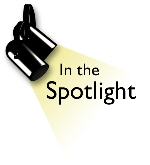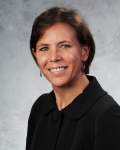Women and nuclear awareness
 Clearly, our attempts to generate greater understanding of energy challenges exclude no member of the public. Young and old, Democrat and Republican, male and female-all must be the aim of public information about U.S. energy policy in general and nuclear energy in particular. Years of industry surveys, however, have quantified the large gender divide on acceptance of nuclear energy. For example, a survey last year by Ipsos Public Affairs showed that 54 percent of men support a stronger role for nuclear energy in the next few decades, while women's support was only 32 percent.
Clearly, our attempts to generate greater understanding of energy challenges exclude no member of the public. Young and old, Democrat and Republican, male and female-all must be the aim of public information about U.S. energy policy in general and nuclear energy in particular. Years of industry surveys, however, have quantified the large gender divide on acceptance of nuclear energy. For example, a survey last year by Ipsos Public Affairs showed that 54 percent of men support a stronger role for nuclear energy in the next few decades, while women's support was only 32 percent.
Three quarters of respondents in a woman-only survey reported taking primary or equal responsibility in paying electric bills, and 91 percent took dominant or equal responsibility for electricity use at home. Preliminary results just released by the U.S. Census Bureau show a rise of 20 percent in women-owned businesses compared with five years ago, and as their numbers grow so too do their concerns for controlling business costs such as electricity. In a 2009 survey by Greenberg Quinlan and Rosner, 98 percent who own businesses have also reduced electricity use at home. Yet women also self-report as knowing very little about nuclear energy. In a 2008 survey by Luntz, Maslansky Strategic Research, 70 percent of moms said that they know "a little or nothing" about the use of nuclear energy in America (compared with 58 percent of the total population surveyed).
So, Entergy began exploring what women do know, and what they want to learn about nuclear energy. "Listening sessions" (more casual, intimate focus groups lending richer dialogue) and traditional survey research through partners such as Women Impacting Public Policy and the Women's Council on Energy and the Environment has revealed much about women's learning, listening, and language preferences when it comes to nuclear matters.
Learning-Women are "information integrators." As explained in "The 80% Minority: Reaching the Real World of Women Consumers," their brains connect the dots, meaning that women generally want a complete picture of energy issues, not just a laundry list of nuclear facts and "convincing" data. This is why an industry task force is working to make available early next year comprehensive energy education resources for nuclear operators, vendors, universities, and others who want the public to better understand why nuclear must be a growing part of the mix. When the entire picture is shown, it is viewed more as information than propaganda, especially by women (who, by the way, comprise the vast majority of primary and secondary school teachers, often turning their learning into teaching.)
Women also often form social networks and support groups for social, psychological, and intellectual fulfillment. In other words, they like to learn together. This makes research through focus groups ideal as educational forums as well. Even better, the more women discovered how limited their real understanding of nuclear energy issues is, the more they wanted to learn. Entergy found that after a three-hour session with strangers, many participants left after exchanging business cards, email addresses, and a commitment to keep sharing information with one another, to keep learning.
Listening-Female research participants indicated that they want to hear from other women about nuclear energy. Like most of us, they consider more credible those with whom they can relate. Moms are especially guarded in their opinion of potentially threatening technologies, but identifying with the speaker goes a long way in helping them stay open-minded. Therein lies more good news, as the number grows of women in the nuclear industry who can speak to women's concerns. The Professional Women in ANS, Women in Nuclear, and leaders such as NRC Commissioner Kristine Svinicki and CASEnergy Coalition co-chair Christine Todd Whitman are all voices for other women to listen to. Tying back to the concept of social networks, even women not affiliated with the nuclear industry can be tapped as leading voices for nuclear energy. Consider a fact reported in Women in Business and Industry magazine that women who own businesses strongly support clean energy sources, with 71 percent believing that nuclear energy should play a very or somewhat important role in addressing our country's electricity needs. (Compare that with the 32 percent of women who support nuclear energy, cited above.)
Language-No matter the aspect of nuclear energy being discussed, it all comes down to safety, or to women's self-defined role as society's caregivers. Anything framed as being good for their families is more likely to be seen favorably. We should frame the safety of nuclear plants by pointing out that "we are so confident in nuclear safety that our own families live here." The relative cost of nuclear energy was viewed by one listening session participant as especially positive as she tried to balance all her family's needs against their household budget. Even the reliability of nuclear power was tied back to family security by a respondent who said that with a daughter on insulin, predictable baseload power was crucial.
Your call to action-If your efforts at public information target some of our hardest to convince-women-be creative in the ways you reach women's groups. Be where they are; join them. Get your female workers out in the public and involved in explaining what our industry does for energy stability. Educate women even while you research their views to assess gaps in knowledge. Be comprehensive and empathetic to their points of view on benefits and risks of all energy sources. Mostly, make them partners in ensuring that America's energy policy direction has major roads leading to nuclear.

- Barfield

